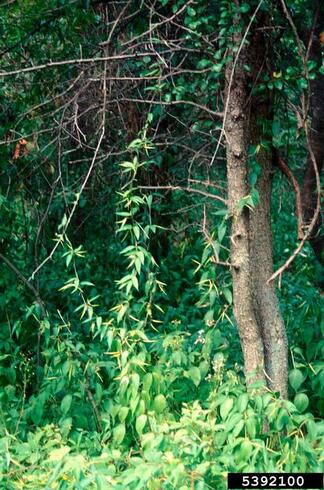Black and pale swallow-wort were introduced in the US from Europe in the 1800s. These European swallow-worts are highly invasive; they form dense monocultures in shade or full sun. Swallow-worts also produce compounds with anti-bacterial and anti-fungal properties, and inhibit the growth of many pathogens. The roots contain haemolytic glycosides, which are toxic to mammals, including livestock. Swallow-worts are also distasteful to many insect larvae and toxic to some, including monarch butterfy caterpillars. It is not clear how often female monarch butterflies lay eggs on swallow-wort, but when they do, the caterpillars die. In general, insect diversity and abundance is significantly lower in dense stands, with cascading effects on the entire food chain.
|
Identification
|
Habitat: Black swallow-wort vines thrive in both shade and sun and are found in disturbed areas along roadsides, pastures, old fields and gardens as well as alvar and along fens.
Additional Information -
Invasive Swallow-wort Best Control Practices
A Homeowner's Guide to Swallow-wort Control
MISIN Species Training Module - Black swallow-wort
MISIN Species Training Module - Pale swallow-wort
Additional Information -
Invasive Swallow-wort Best Control Practices
A Homeowner's Guide to Swallow-wort Control
MISIN Species Training Module - Black swallow-wort
MISIN Species Training Module - Pale swallow-wort
Banner Credit: Leslie J. Mehrhoff University of Connecticut, Bugwood.org





